A-Z of Dubstep
From Appleblim to Zomby in 26 easy steps
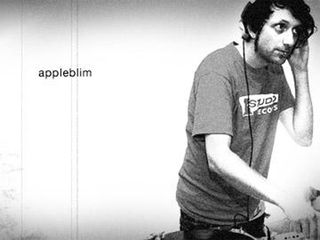
Appleblim
A fine place to kick off MusicRadar's A to Z adventure, Appleblim is something of a dubstep polymath.
Founder of Apple Pips Recordings, one half of the now defunct Skull Disco label, revered producer and sought after DJ, Bristol-based Laurie Osborne is well and truly integrated within all aspects of the genre. For those wanting proof, just hunt down Mystikal Warrior (SKULL001) or check this interview.
A is also for:
Automation: Dubstep beats are traditionally built around two bar loops, and the basslines around 16 bar phrases. Keep things interesting with 8 automation tricks every producer must know.
Albino: Linplug's powerful soft-synth is widely used for dubstep's signature bass and can be heard in tunes by Benga and Rusko.
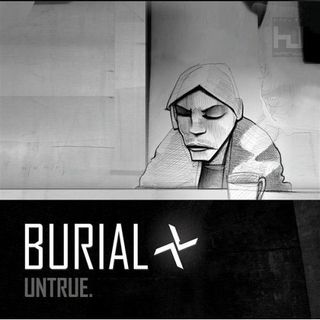
Burial
A sonic representation of a rain-soaked South London, Burial's self-titled début album was released to critical acclaim in 2006.
Burial chose to keep his identity hidden, in keeping with his affinity for the anonymous culture of pirate radio, white label bootlegs and illegal raves.
Things took a turn for the bizarre last year after his follow-up release, Untrue, was nominated for a Mercury Prize. Inevitably, UK tabloid The Sun was uncomfortable with his secret and launched a campaign to have it revealed.
Burial eventually outed himself via his MySpace page as William Bevan, an alumnus of South London's star factory Elliott School. Other alumni include Hot Chip's Joe Goddard and Burial collaborator, Kieran (Four Tet) Hebden.
Burial's sound is a distinctive one. Those fancying a go at replicating it should head to our cunningly-titled tutorial, How to make a Burial-style beat. End plug.
B is also for:
Bass: The clue is in the name for the first two ingredients required for dubstep - 2-step rhythms and drum sounds, with plenty of dub production style and offbeat groove. The third - and most important for many - ingredient is bass. Gut-shaking, speaker-busting bass.
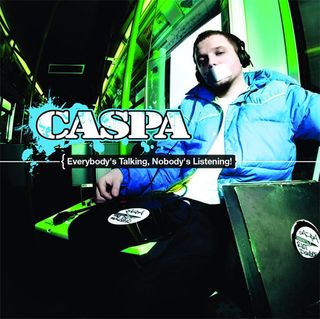
Caspa
Another man not content with the life of a bedroom producer, Caspa is the founder of the Dub Police and Sub Soldiers record labels and an internationally acclaimed DJ.
A profile boost came with the release of Fabric Live 37, the huge mix collaboration with label-mate Rusko. Since then he's released an album, had huge remixes for Deadmau5 and TC and recently took his place alongside the greats when he recorded his Radio 1 Essential Mix in July.
C is also for:
Coki: Co-founder of the DMZ night and label and one half of the mighty Digital Mystikz.
Croydon: The spirtual home of dubstep, it was the home of FWD and the Big Apple Records record shop. Former employees include Skream and Benga, whilst Digital Mystikz, El-B, Zed Bias and Plastician were customers.
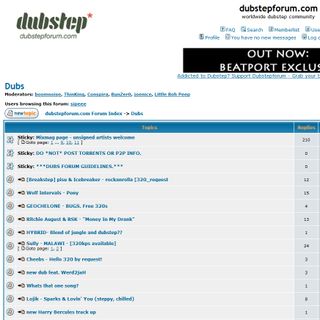
dubstepforum
Whether you're looking for the newest talent on the scene, trying to get yourself heard or just looking to network with other dubheads, there's only one place to go - dubstepforum.com
The forum was set up back in 2005 by DJ Dubway when the UK Garage forum dubplate.net was temporarily closed. Aware that 'steppas' across the globe needed a place to communicate and share ideas, dubstepforum.com was born.
The community has grown to over 35,000 hardcore users in just a few years. In a community where the amateur mix with the elite, there are countless stories of new producers who've had their tunes critiqued, signed and sold via the site.
Liberal use of its search function will reveal posts from renowned producers and DJs, offering free tracks and mixes as well as hilarious trash talk before DJ battles on national radio.
D is also for:
Dub Police: Caspa's record label, with releases from Rusko, N-Type and amongst others, The Others.
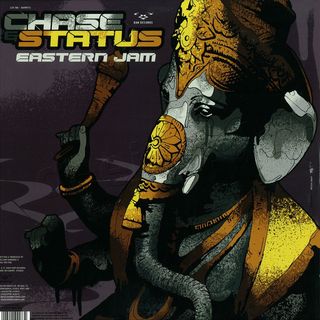
Eastern Jam
This Bollywood-sampling banger was the flipside to Chase & Status's crossover hit Pieces, featuring Plan-B.
Chase & Status hit on something special when they infused this dance floor monster with some eastern flavours. For a long time (maybe too long), no dubstep set was complete without this being thrown in the mix.
Ever the astute businessman, Snoop Dogg decided to jump on the track earlier this year. With added production from the Wild Animals, it was re-titled Snoop Dogg Millionaire to coincide with the release of Danny Boyle's film, Slumdog Millionaire. Concerns on various dubstep forums about artistic integrity meant the track was met with 'mixed' reactions…
E is also for:
Excision: Canadian exponent of all sounds heavy, responsible for one of the the most downloaded dubstep mixes ever, Shambhala (2008)
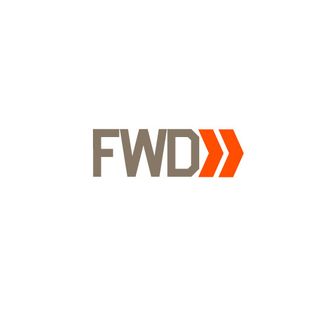
FWD>>
Starting off in Central London's Velvet Rooms, FWD>> has been pushing the grimier, underground sounds of the capital since 2001.
Described as 'dark, bassy and informal,' these wide-ranging club nights are not full of your average punters out to get on it. Rather the crowd is made up music-obsessed 'headz' coming to hear the latest beats from producers who write specifically for the FWD>> crowd.
Superstar producers Skream and Kode9 are two alumni that have worked the decks whilst grime MCs Dizzee Rascal, Wiley and Miss Dynamite have manned (or womanned) the mic.
F is also for:
Fabric Live 37: Caspa & Rusko turn four capable hands to Fabric's live mix series. Released in 2007, it reflected their cheekier take on dubstep, with cockney gangster samples and ravier synths helping craft a sound that was friendlier to the mainstream.
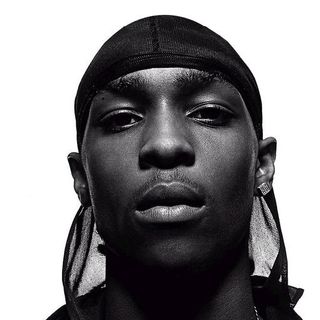
Grime
The outgoing cousin of dubstep, grime shares DNA with UK garage and 2-step but has evolved to have its own verbose sound.
Production-wise, lo-fi drums and morphing synth bass sounds can be heard in both dubstep and grime and dubplate culture exists in both scenes.
Cross pollination is rife between dubstep and grime. DJs work the genres together and grime MCs spitting over a dubstep beat is becoming a common occurrence.
G is also for:
Geiom: Berkane Sol signed Nottingham-based Kamal Joory back in 2006. Geiom plays live using an Atari ST, a Yamaha DX200, an Emu sampler, a Quadraverb 2, a Kaoss pad, a midi controller and a mixing desk. Cool.
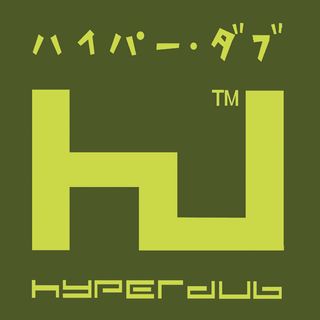
Hyperdub
Founded and run by Steve Goodman (better known as Kode9), Hyperdub is home to Burial, Zomby, Ikonika and The Bug.
Hyperdub has a deserved reputation as a home for artists who push the boundaries of dubstep. From hardcore rave to hardcore ragga, Hyperdub releases always run a broad church of styles and influences.
Whilst you could never identify a label sound, the label's ethos has given it a deserved reputation amongst the dubstep cognoscenti.
H is also for:
Hatcha: Elite DJ, A&R man at Big Apple Records and now Kiss FM's resident dubstep host.
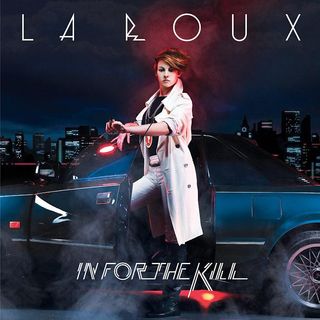
In For The Kill
Alright, it’s a bit weak but Skream simply must get a mention and 'S' is a very busy letter.
Skream's appropriately-titled Skreamix of In For The Kill is the first dubstep record that will have got your non-muso mates talking. Famed for its extended intro and epic breakbeat finale, the track's popularity peaked when La Roux played this version live at Glasto 2009. From 700 rare 12" promos to BBC ubiquity - and still a total rush when that breakbeat kicks in.
Another Big Apple alumnus, Ollie Jones is as prolific a producer as you will find. Producing since the age of 15, he claims to have written over 1400 songs. Happy dabbling with almost any style (from the lush synth-driven Dutch Flowers to jump up anthem Check It), Skream is still most famous for wobbly classic Midnight Request Line - possibly the the first dubstep hit.
Midnight Request Line, Dutch Flowers, that La Roux mix… He's good, isn't he?
I is also for:
iTalTek: Brighton-based producer, check out the ambient Deep Pools on Planet Mu.
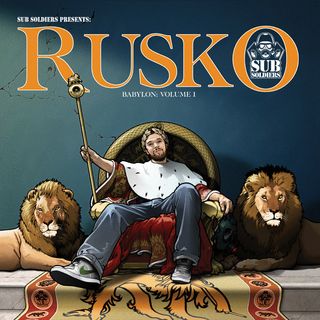
Jahova
Released back in 2007 on 2x12" Babylon: Volume 1 (Sub Soldiers Records), this homage to the roots of dub was one of two outstanding tracks on the Rusko's first EP.
Borrowing the melody from The Revolutionaries' Kunte Kinte, Jahova leant more towards dub than step and was one of Chris Mercer's last tracks in this style before moving from Leeds to London and embraced all things cockney.
Now concentrating on ravier, party tunes with humorous samples spliced in, the most obvious of these new releases was Cockney Thug. Based around a charming character called Bricktop, vocals implored the crowd to 'wake the fuck up' before Rusko's trademark dub sirens and bass-wobble came in to batter the dancefloor.
We say: Laaaarge. We also say if you want to make a track like Rusko, just click here. End plug.
J is also for:
Joker: One to watch alert! Bristol boy wonder obsessed with videogames and creating 'purple tunes'. Apparently, he sees tunes as colours.
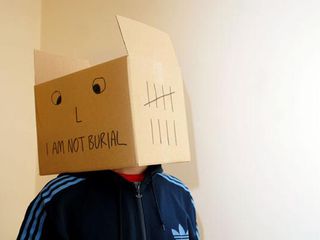
Kode9
Kode9 is another in the long list of producers who have successfully achieved a dubstep trifecta - playing out at FWD>>, a DJ on Rinse.FM and an artist on his own Hyperdub label
Now based in London, Glaswegian Steve Goodman is an academic. His PhD in philosophy has lead him to lecture in media production and run a master's program in Sonic Culture. While not as strict about his anonymity as label mate Burial, Goodman said would hear his students discussing his radio show from the previous night – oblivious that the DJ was taking the class…
Goodman's roots are in jungle, drum and bass and dancehall, all worming their way into his solo tunes and collaborations with MC The Spaceape. Recent releases such as Bad/2 Bad and Black Sun/2 Far Gone have shown him setting course for lighter, funky territories whilst still retaining his dark, paranoid sonic outlook.
K is also for:
Ketamine: Depending on what you read, the narcotic of choice for the dubstep and wonky scenes. Here's what The Guardian's Simon Reynolds had to say. And here's Zomby's response. What do we think? Just say neigh!
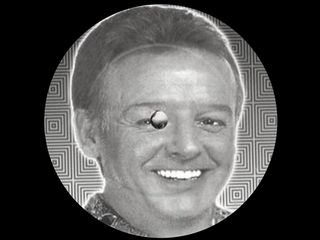
Les Dennis
Just give us a minute to explain and all will become clear.
Obviously terminally cheeky ITV presenter Les Dennis has nothing to do with dubstep. He's only here to highlight the ingenuity with which musicians are using sampling.
Back in May 2009, Flux Pavilion (Circus Records) and Trolley Snatcha (now on Dub Police) decided to enlist the help (via YouTube) of the D-Man for their grimy banger Family Fortunes (DUBmented Beats).
Straight out of the light-hearted school of dubstep, who knew that a filthy synth replacing the ‘wrong answer’ noise from the show would be so funny.
The track will be the official theme tune for the next series.
Our survey said: 'Not really.'
L is also for:
LFO: Low Frequency Oscillator. Just assign this to the Filter Cutoff Frequency in your synth of choice, it's essential for making that dubstep bass sound.
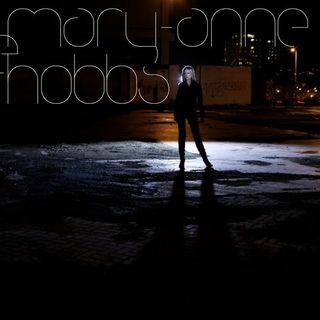
Mary Anne Hobbs
In early January 2006, Mary Anne Hobbs broadcast Dubstep Warz for Radio 1 - a two-hour show entirely dedicated to dubstep.
Whilst Hobbs had already championed grime and dubstep on her late night Breezeblock slot, this was the first time an entire mainstream radio show had been dedicated to the nascent genre.
Three and a half years on, the show is still regarded as a key event in breaking dubstep worldwide and Hobbs hasn't stopped. Her compilations for Planet Mu (Warrior Dubz, Evangeline) consistantly chronicle the scene with extremely shrewd taste, while her weekly experimental show still includes a heavy dose of the dub. A recent broadcast from Sonar featuring killer sets from Joker, Martyn and The Gaslamp Killer is a must-hear. Go biker lady!
M is also for:
Magnetic Man: AKA Skream, Benga and Artwork mashing and remixing dubstep tunes live and on the fly, using Ableton Live and MIDI controllers.
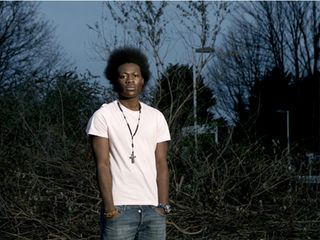
Night
'The one with that synth melody', Night is simply inescapable. Played by DJs from all genres, it's been playlisted on commercial radio and spawned a legion of soundalikes and remixes. One year on, MIdnight Request Line finally had a rival.
Benga used two DAWS when producing his album Diary Of An Afro Warrior - Image-Line’s FL Studio for beats and Logic 5 for VSTs, automation and mixing.
You've got the tools - now all your need is the talent...
N is also for:
Native Instruments Massive: Get yourself a copy and load up the Brutal Electro patch - Chase & Status did (using it in Eastern Jam) as did a gazillion other producers. See here for more.
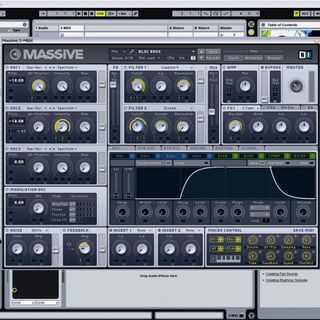
Oscillators
In the beginning, there were soft synths.... And it was these virtual oscillators that generated the sound of early dubstep.
Created entirely on a computer, the first dubstep tracks were a testament to the mastery producers such as Skream and Benga had over their soft synths.
Knowing your weapon of choice inside and out is key to getting the sounds out of your head and onto the dancefloor - and these guys knew. See Skream's track Filth for proof and some mind-bending examples of synth sculpture.
O is also for:
Offbeat: Inheritedly directly from dub and reggae, offbeat chords stabs and hi-hats are an intrinsic part of dubstep's sonic style.
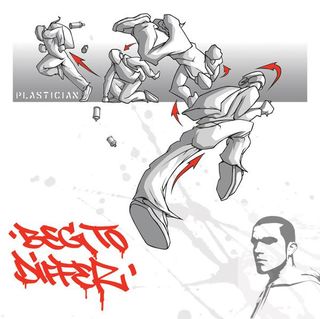
Plastician
Chris Reed of Croydon (yup, Croydon again) is a respected DJ and producer in both grime and dubstep, and founder of Terrorhythm Records.
Originally going under the name Plasticman, the Thornton Heath local had a minor run-in with minimal techno man Richie Hawtin, who performs under the name Plastikman.
To avoid any legal issues, the 'M' was swapped for an 'I' and Plastician was born.
His annual May Mix is widely anticipated. This year's mix topped well over 10,000 downloads at the last count. Plastician’s spot-on tune selection provides an hour-long sonic assualt which captures the current sound of dubstep.
P is also for:
Peverelist: Back to Brizzle for this one. A producer and DJ, Tom Ford also manages the infamous Rooted Records (which takes various Radar writers for a lot of cash each and every week) and runs Punch Drunk Records.
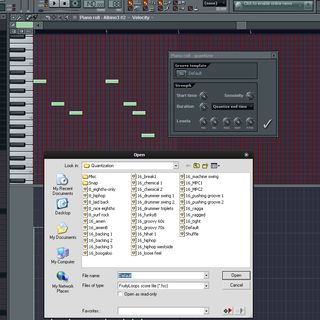
Quantization
If your snare is late or your bass ain't tight, what you gonna do? Click quantize!
If you program every drum hit and melody in with a mouse, then you can stop reading now. If however you prefer the hands-on approach, playing things in with a MIDI controller to keep the key rhythmic elements in sync, keep reading!
Quantizing your bassline keeps things rolling and if the beats are tight, your track will feel more cohesive.
If you really want that lop-sided Dilla-esque feel, focus on key events in the track. For example, when a new part enters after a dramatic pause, snap in the first note of every instrument and the first drum hits to give your drop the desired effect.
But after all said and done, there's a lot to be said for leaving things 'wonky'…
Q is also for:
Quantic - Mishaps Happening (FP Remix): Flux Pavilion's incredible rework of Will Holland's jazz/soul-electronica track. Very rare and very amazing.
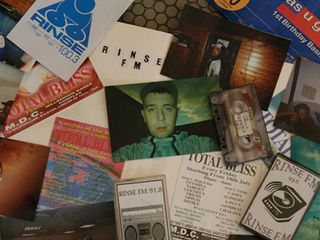
Rinse FM
15 years young in 2009, Rinse FM is thought to be London’ biggest pirate radio station.
Focusing on the underground sounds of the UK, listeners will hear grime, UK funky, garage and dubstep. The launch of its online streaming service in 2006 meant listeners outside the capital and the UK could listen in live, furthering dubstep’s reach around the world.
N-Type is possibly the closest to a radio celebrity that Rinse FM has. He’s also the latest Rinse-r to get behind the decks for the station's acclaimed mix CD's, with this month's Rinse: 09 subject to a lot of deserved hype.
R is also for:
Reso: "The soundtrack to a robot genocide…" Even the SEGA Megadrive isn't safe from sampling - just listen out for the Altered Beast clip in Reso's Beasts In The Basement.
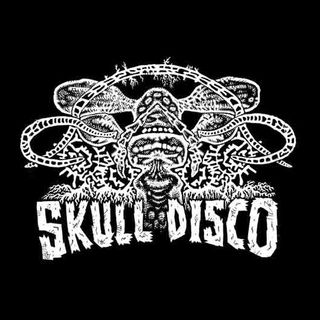
Skull Disco
After a meeting at a club night in Bath, Mordant artist Sam Shackleton was so impressed by Laurie 'Appleblim' Osborne's Mystikal Warrior tune, they both decided to set up a label to release such tunes. Skull Disco was born.
Ten amazing releases later, the label is no more - but what a ride it was. Rather than identikit dubstep, Skull Disco releases often tended to use unusual sounds such as African percussion and sampled ethnic vocals.
Although these elements were normally found intertwined with massive sub bass, the more out there Skull Disco releases were closer to Basic Channel's dub techno or even the ethnic electronica of Muslimgauze than traditional dubstep. Listen to Ricardo Villalobos's twenty-minute remix of Shackleton's Blood On My Hands and you'll see what we mean. Skull Disco could go anywhere.
Appleblim is still releasing tunes and running Apple Pips. Shackleton is… Watch this space.
S is also for:
Shackleton: See above!
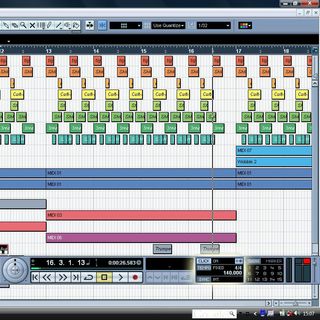
Tempo
Tempo might not be the most thrilling of subjects, but it's an important one nevertheless.
Dubstep is always at 140bpm. Well, 99% of it is. You may be lucky enough to find that elusive 138 or 142bpm tune if you really look hard enough. Having said that, a lot of tunes have an implied 70 bpm groove by way of their laid back, dub-influenced beats.
T is also for:
Tempa: The label responsible for Benga & Coki's Night. They've been around since the beginning, releasing music for dubstep lumineries such as Skream, Loefah, Coki, Horsepower Productions, Kode9 and Headhunter.

The UK
Although dubstep’s genesis can be traced back to Croydon, helped by a handful of pioneers it has spread across the UK with each area evolving its own signature sound.
It’d be impossible to convey the diverse sub-genres of dubstep in words but just a cursory listen to, say, Bristol and London dubstep shows the two scenes are a sonic world apart. Equally, Manchester and Leeds too have recently grown their own style.
It has been put down by some as the vibe in each city being assimilated into the music. Whether it's ravey, chilled, half-time or four to the floor, cratediggers out there will be relieved that it all still falls under the dubstep umbrella.
U is also for:
Untrue: Released in 2007 on Hyperdub, Burial's second album was nominated for a Mercury Prize and put dubstep on the mainstream map. See 'B' for the whole story.

Vex'd
Before we start, the Vex'd lads would like you to know it's pronounced 'vecksed' and not 'vecks-dee'.
Fortunate enough to feature on the original Dubstep Warz show with Mary Anne Hobbs, the sound of the duo's uber dark, broken beat hybrid album Degenerate (2005) has influenced a legion of producers.
Their success goes hand in hand with that of their label, Planet Mu. Starting life as in a Virgin Records imprint way back in 1995, the label had initial success with noisy Rephlex-y releases from the likes of Venetian Snares, Luke Vibert and label boss Mike Paradinas's own band, muZiq.
However since going independent in 1998, they've gone from strength to strength. In 2005, they started signing dubstep artists in the form of Vex'd and Mark One from Manchester's Virus Syndicate with recent releases coming from Distance, Pinch and Boxcutter.
V is also for:
Veri.Lo Records: Home of Finn 501, and hence the monster Get Back.
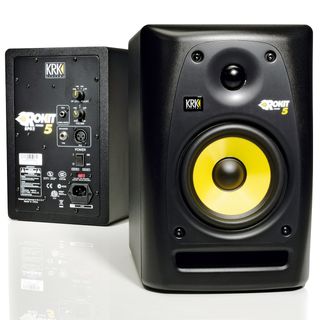
Woofer
Want to make sure your production efforts pack the necessary bass punch? Then make sure your monitors have enough woof.
Keeping your bass in check is an important part of mixing in all genres, but especially so for would-be wobblers. Sub-bass is all the audible stuff under 90hz, so you’ll want monitors that can manage a fair way below that.
Eight inch woofers should be plenty, as a few artists on the latest Rinse CD are known to use monitors with six-nchers. If yours are smaller than that, you’ll want to invest in a separate sub-woofer for under your desk.
W is also for:
Wobble: (i) Automate your LFO rate. (ii) Assign to filter cut-off. (iii) Job done.
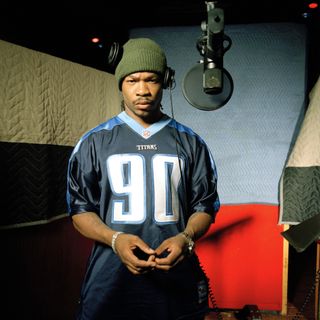
Xzibit
Ah, X, the curse of A-Z compilers everywhere. Thankfully for us, Pimp My Ride mainstay Xzibit has featured on a recent UK dubstep/US hip-hop soundclash.
Our old friend Plastician was the major force behind May's snappily-titled mixtape, Mr Grustle and Tha Russian Present Dubstep LA.
No, we're not quite sure what it means either but it does feature global megastars such as Xzibit and Snoop Dogg rapping over tunes by Chase & Status, Rusko and D1. For the full story, head - somewhat surprisingly - here.
X is also for:
Absolutely nothing, as far as we could make out. Suggestions on a postcard to twitter.com/musicradar and mark your entries #xstandsfor…
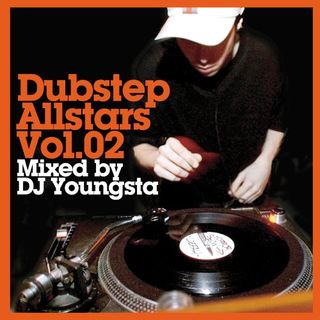
Youngsta
Although he was nearly 22 by 2005, Youngsta famously lent his precocious ears to Vol. 2 in Tempa's then-new Dubstep Allstars mix series.
The evergreen DJ's selection was made up of entirely unreleased tracks, so listeners were forced put a lot of faith in the selector. They were suitably rewarded and Youngsta went on to mix the equally standout Vol. 4 alongside Hatcha.
Volumes later and the Dubstep Allstars name is one you can still trust to bring you quality compilations every time.
Y is for:
You: As in 'You really should listen to dubstep more often.'
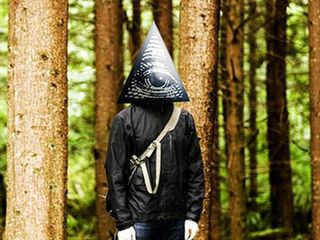
Zomby
Mad illuminati mask aside, Zomby is an enigma. You can tell just by listening.
It's hard to know what to say about about Hyperdub's undead producer. His sound evolves and skips about with every release, making it hard to put a finger on his style.
Ranging from the straight-ahead dubstep of Spliff Dub (and you have to hear the Rustie mix of that!) to his homage to rave and hardcore Where Were U In '92?, his experimental dabblings in wonkier music that lie somewhere inbetween have garnered the most attention.
Indeed, if this August sees him playing with lo-fi trancers Animal Collective, then October sees him out alongside dancehall warrior The Bug. That out there.
Z is also for:
Zed Bias: Influential garage producer whose dark and heavy sound was the perfect precursor to dubstep.
Most Popular






